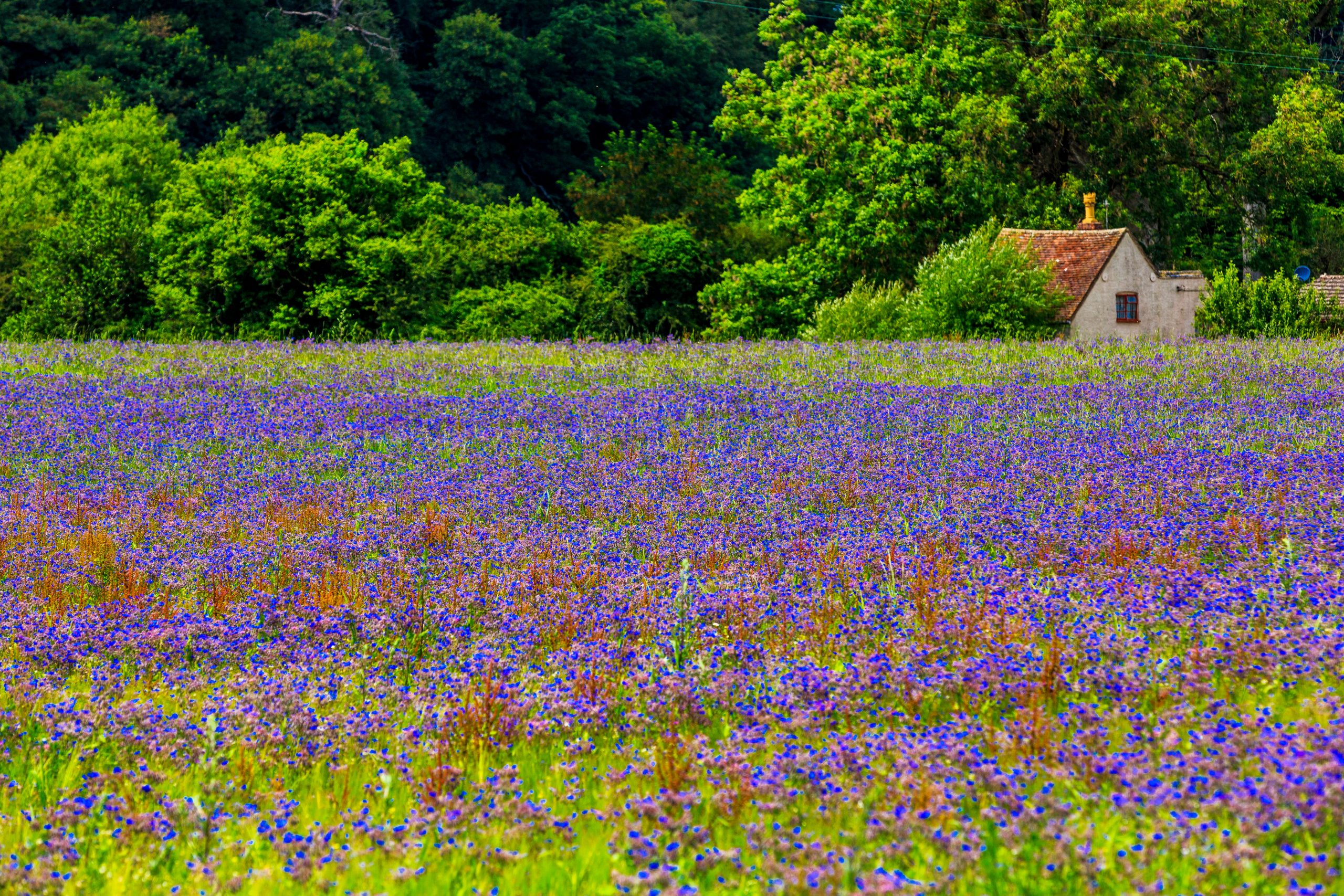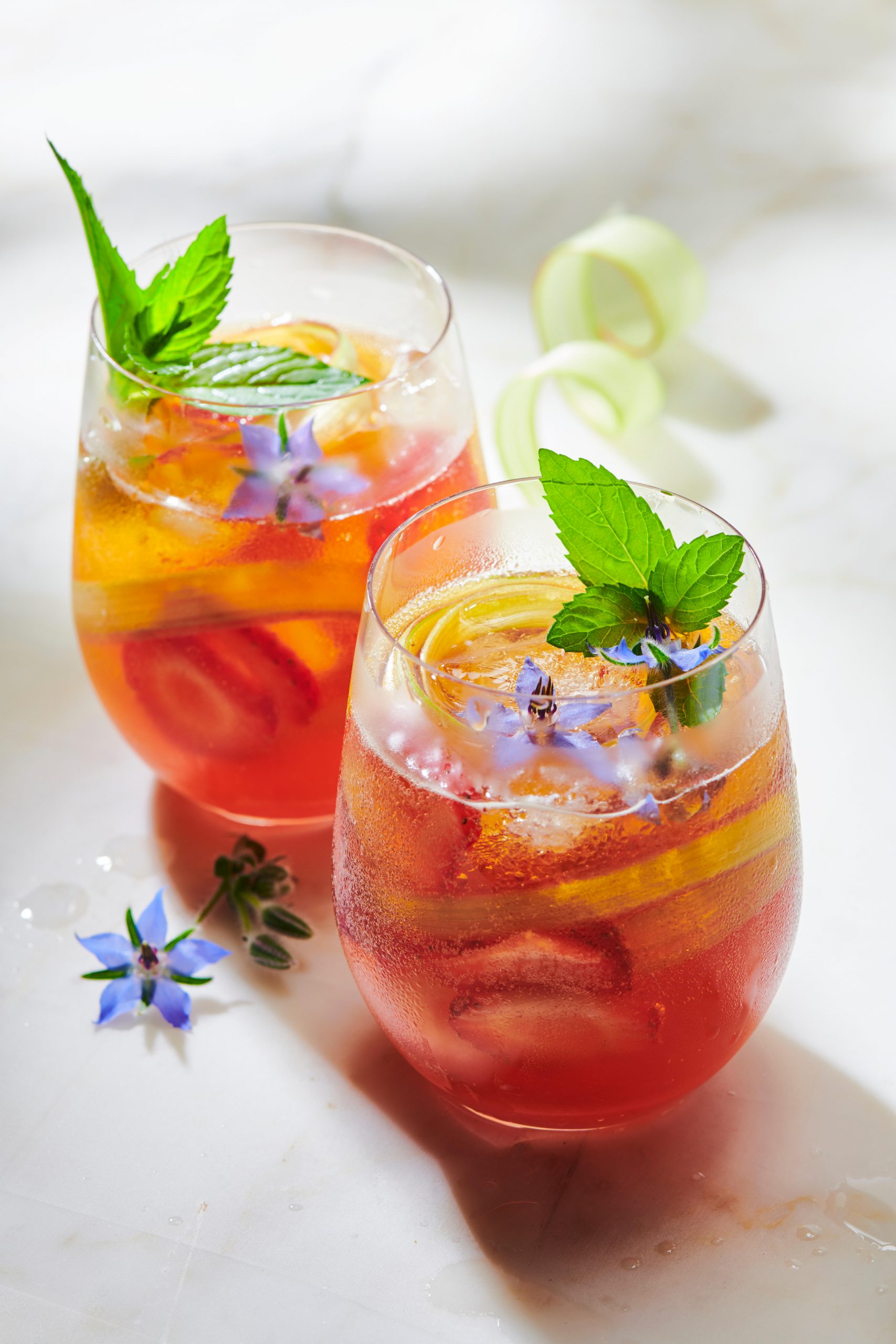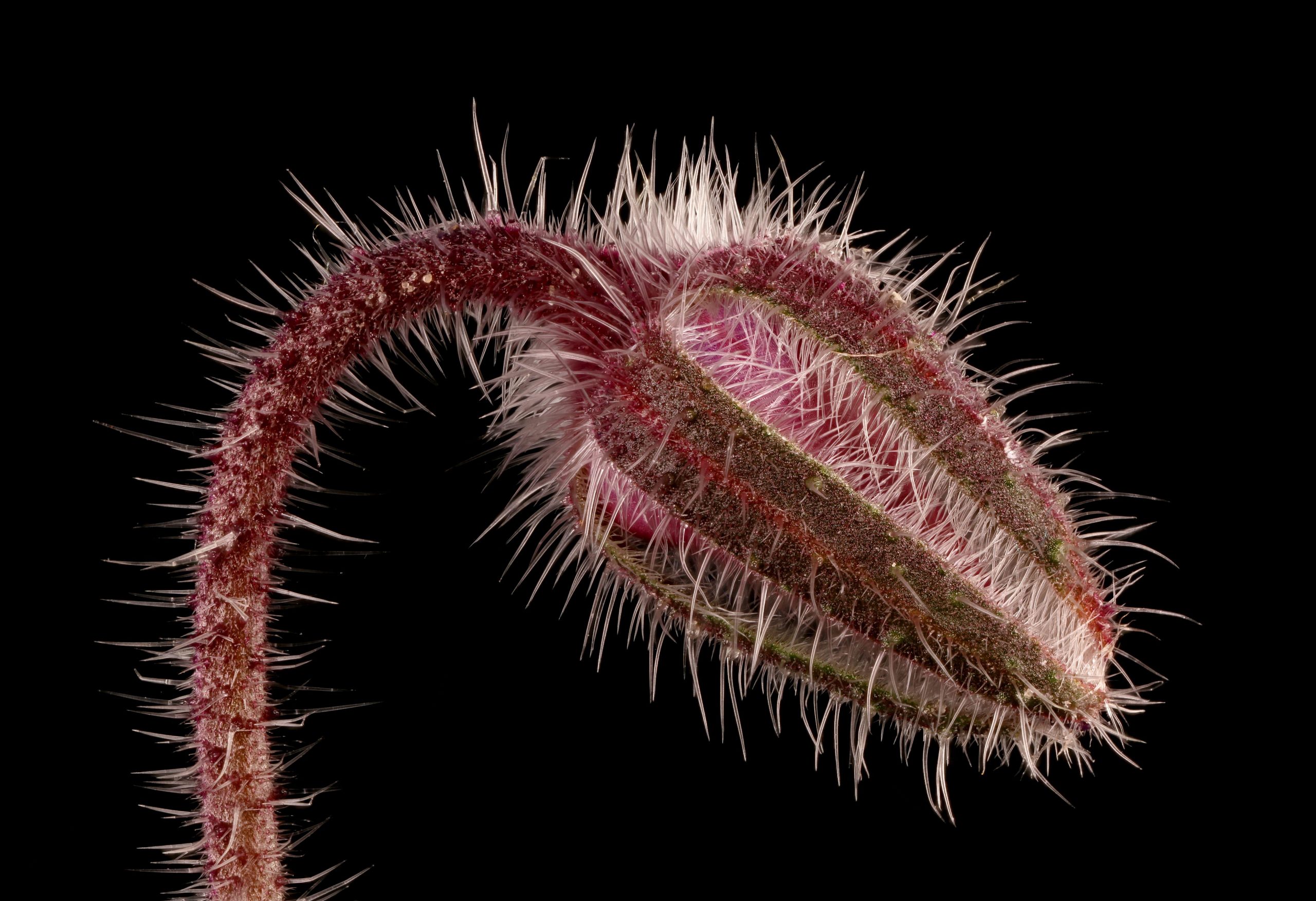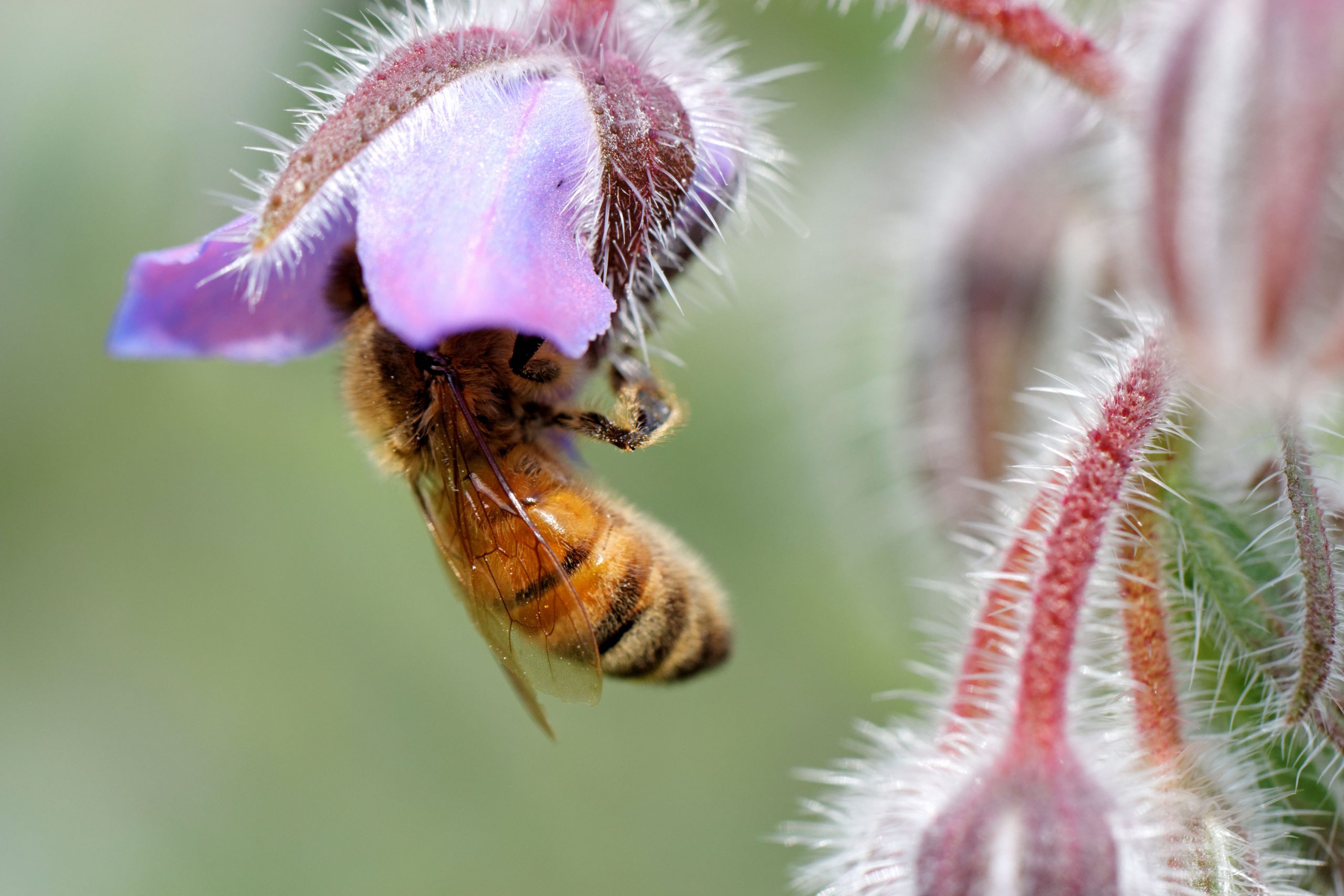Borage: The Pimm's decoration that powered the Crusaders and lifted 'dusky melancholie'
Once considered so sacred that Druids consecrated their weapons with its starflower petals before battle, borage deserves more recognition, says Ian Morton.


The closest most get to bugloss these days is the intensely blue flower nestling atop a properly constructed glass of Pimm’s.
No herb, once so generous in its offerings to mankind, has retreated further from popular awareness. Its many English folk names — bee plant, bee bush, bee bread, ox tongue, talewort, starflower, cool tankard, herb of gladness, borak, lisan selvi, lesan-el-tour, euphrosinum and common bugloss — reflect its perceived attributes.
Its five-petal flowers grow together in long, scorpioid cymes and are wreathed in a haze of soft bristles. On the human palate, they have a moreish, honey flavour. The hairy leaves and stems may be likened to bovine tongues in texture and shape — hence bugloss, an inelegant word that comes from the Greek bou, a cow or ox, and the Latin glosso, tongue.
Borage, sometimes written borrage, is thought to derive from the Celtic borrach, or courage, for the plant was sacred to the Druids: weapons were consecrated with it before battle and their warriors prepared for the fray by drinking wine in which borage had been steeped. Its virtue was recognised throughout the Classical world, for the Greeks and Romans used it similarly — Dioscorides and Pliny the Elder both acknowledged it.
A woman hoping to elicit a positive response from a cautious suitor might slip it into wine
Some scholars suppose it to have been the ‘nepenthe’ of Homer’s Odyssey Book IV, a substance that, dropped into wine, ‘eased men’s pains and irritations, making them forget their troubles — a drink of this, once dipped in wine, would guarantee no man would let a tear fall on his cheek, not even if his father and his mother died’.
Belief in its sinew-stiffening powers persisted into the Middle Ages, when family and friends bidding farewell to departing Crusader knights offered stirrup cups in which borage flowers floated. On a domestic level, folklore suggested that a woman hoping to elicit a positive response from a cautious suitor might slip borage into his wine to encourage him to pop the question.

Borage (Borago officinalis) has close equivalent names in other European languages and is common across the region, although it originated in the Aleppo area of Syria. In various Continental areas, its cucumber-tasting leaves are a food item.
Exquisite houses, the beauty of Nature, and how to get the most from your life, straight to your inbox.
In Poland and Russia, it is used to flavour pickled gherkins; it is eaten as a vegetable in Germany — with its green soup a Frankfurt speciality — and, in northern Spain and north-western Italy, it may be added to ravioli and pansotti fillings. It was one of the plants transported across the Atlantic by pioneers bent on establishing traditional fare and herbal remedies in the new world; its self-seeding habit in temperate climes has also carried it across North America.
In a favourable position, borage will remain in bloom for many months, self-seeding to reappear later in the same season and bigger and bolder next year. Honeybees and bumblebees, especially the yellow-marked garden and the ginger-clad carder, hurry to its drooping blooms, which replenish their nectar as soon as it has been taken — a rare quality.
Its presence as a companion plant is said to help squashes, spinach, cabbages, cucumbers, strawberries and fruit trees by attracting pollinator insects. It also repels the undesirables and is thought to be especially beneficial to tomato plants — it confuses the female five-spotted hawkmoth about where to deposit her eggs, the resultant caterpillars of which, known as tomato hornworms, can wreak significant damage. Therefore, any gardener treating borage as an intruder is doing his patch and its insect visitors a disservice.
The plant’s reputation for bolstering morale continued into the Renaissance. John Gerard’s Herbal, largely a 1597 translation of a 1554 treatise by Rembert Dodocus, widely available in Europe in Latin, Dutch and French, quoted an old saying, ‘Ego borago, gaudia semper ago’ (I borage always bring joy).

Praising its ‘gallant blewe floures’, Gerard declared ‘those of our time do use the flowers in salad to exhilarate and make the mind glad. There be also many things made of these used everywhere for the comfort of the heart, for the driving away of sorrow and increasing the joy of the mind. The leaves and flowers... put into wine make men and women glad and merry and drive away all sadness, dullness and melancholy as Dioscorides and Pliny affirm. Syrup made of the flower of borage comfort the heart, purge melancholy and quiet the frantic and lunatic person.’
Half a century later, in his Complete Herbal, Nicholas Culpeper acknowledged that borage and the related single-stem variety, viper’s bugloss, were ‘so well known to be inhabitants of every garden that I hold it needless to describe them.
It groweth wild in many places of the land and may be plentifully found near London, as between Rotherhithe and Deptford by the ditch sides... herbs of Jupiter and under Leo, all great cordials and strengtheners of nature’. He also extolled the plant’s many medicinal virtues.

‘The leaves or roots are to very good purpose used in putrid and pestilential fevers, to defend the heart, and help to resist and expel the poison or the venom of other creatures... the seeds and leaves are good to increase milk in women’s breasts... leaves, flowers and seeds are good to expel pensiveness and melancholy, to clarify the blood and mitigate heat in fevers.’
Culpeper further recommended a borage syrup for yellow jaundice, itch, ringworm and spreading scabs or sores. It was ‘good for those weak with long sickness, and to comfort the heart and spirits of those that are in a consumption, or troubled with often swoon- ing, or passions of the heart’. He proposed borage preparations for inflamed eyes, mouth and throat ulcers, coughs, thin phlegm and ‘rheumatic distillations upon the lungs’.
Flowers... put into wine make men and women glad... and drive away all sadness
Culpeper’s contemporaries also sustained the regard in which borage was held. Herbalist John Evelyn recommended it ‘to revive the hypochondriac and cheer the hard student’. Statesman and philosopher Francis Bacon, although an early advocate of the scientific approach, reiterated the long-held belief that it was ‘an excellent spirit to repress the fuliginous vapour of dusky melancholie’.
Modern herbalists accept its value as a treatment for fever, coughs, lung inflammation, depression, as a diuretic and sedative and for skin and cosmetic products. It is also claimed to help control cholesterol levels and it may have a beneficial effect against Alzheimer’s and multiple sclerosis. Indeed, over the past 30 years, the UK has become the world’s largest commercial grower and producer of borage- seed oil, which is rich in fatty acids and one of the highest naturally known sources of gamma-linolenic acid.
Two sides of viper’s bugloss
Although the familiar garden borage may also be called common bugloss, Culpeper’s mention of the resistance and expulsion of poison recognised another widely distributed member of the Boraginaceae family, viper’s bugloss. The most common of a dozen tall, spiky varieties, it was traditionally used as an antidote for snakebite, although this may have developed in folklore because the flaring flowers have the look of snake heads poised to strike. According to the ancient doctrine of signatures, a plant’s appearance was taken as a heavenly sign of its medicinal efficacy.
This variety (Echium vulgare), also known as the snake flower, blue Devil and blueweed, flourishes on verges, in chalky wasteland and disturbed areas— even old tank tracks on Salisbury Plain —and in sand. An area on the Marske dunes, near Redcar in North Yorkshire, is known as ‘Blue Mountain’ for the intensity of its display. Attractive to many insects—and a food plant for painted lady caterpillars—it is the county flower of East Lothian and the traditional language of flowers lists it as the symbol of falsehood, a rather mixed message.
A related variety has a double-edged reputation in Australia, too. Introduced there in the 1880s by settler Jane Paterson to bring colour to her garden in Cumberoona, New South Wales, Echium plantagineum seeded itself freely: it is reviled as a weed across the southern states and known as Paterson’s curse.
Four Mediterranean insect species have been introduced to attempt bio-control. Yet, in dry periods, the interloper offers fallback grazing for ruminants when other fodder planting wilts, justifying its alternative nickname, salvation Jane. Briefly, by sheep and cattle farmers, the woman and her intrusive introduction are forgiven.

Moss: The 350-million-year-old plants that turn the unsightly 'into things radiant of beauty'
Moss is fascinating, ancient and bizarre, and grows so slowly — an inch per quarter of a century — as to make
After some decades in hard news and motoring from a Wensleydale weekly to Fleet Street and sundry magazines and a bit of BBC, Ian Morton directed his full attention to the countryside where his origin and main interests always lay, including a Suffolk hobby farm. A lifelong game shot, wildfowler and stalker, he has contributed to Shooting Times, The Field and especially to Country Life, writing about a range of subjects.
